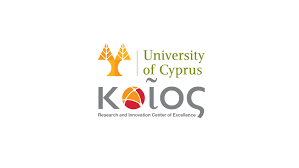- What are the existing microfinance measures in the country today? (indicate the number of measures)
| TYPE OF MEASURE | MEASURE (indicate the names of the measures) |
| NATIONAL | KIOS Research and Innovation Centre of Excellence, University of Cyprus |
| LOCAL (provincial, regional, municipal or equivalent territorial reality) | |
B) For each MEASURE ( to repeat for each measure)
| Name/Title: Prof. Christos Panayiotou | |||
| Name of responsible organization: KIOS Research and Innovation Centre of Excellence, University of Cyprus | |||
| Website: https://www.kios.ucy.ac.cy/ | |||
| NATIONAL OR LOCAL | N/L | ||
| Starting year | 2008 | End year | ongoing |
| The KIOS Research and Innovation Center of Excellence (KIOS CoE) operates within the University of Cyprus. The Center was established in 2008 and was subsequently selected by the EU to advance into a Research and Innovation Center of Excellence in 2017. With collaboration with Imperial College London, KIOS has succeeded in securing funding in excess of 40 million euros for the period of 2017-2024. This is the largest and most competitive funding to be secured for research and innovation in Cyprus which will be implemented as part of the EU’s strategic Horizon 2020 program for “Spreading Excellence and Widening Participation – Teaming”. The KIOS CoE is the largest research and innovation center in Cyprus on Information and Communication Technologies (ICT) with an emphasis on monitoring, control, management and security of critical infrastructures such as electric power systems, water distribution networks, telecommunication networks, transportation systems, healthcare systems as well as emergency management and response systems. The goal of the Center is to conduct outstanding interdisciplinary research and innovation and produce new knowledge and tools that can be applied to solve real-life problems. The Center collaborates with an extended network of national and international academic, industrial, and governmental organizations to assure that its research has maximal applicability and impact. | |||
- What kind of activity does this measure finance?
| Creation of new businesses | Yes |
| Strengthening of existing businesses | Yes |
| Specific investments – specify type (i.e. innovation, research, environmental transition, hiring, internationalization, purchase of goods) | Health, Transportation, Technology, Telecommunication |
| Training activities | Yes |
| Other (specify) |
- What type of financing is it?
| Low-interest loan (indicate the repayment time and, if present, the requirement for collateral) | No |
| Non-repayable grant (indicate the percentage of non-repayable fund) | Yes If Yes, percentage of non-repayable fund: 100% |
| Tax credit | |
| Other (specify) |
- How does the activation of the measure work?
| One-stop means | Yes |
| Call with closing date |
- Financial entity of the measure (indicate the resources allocated)
| Overall amount | |
| % facilitation for each recipient | |
| Minimum amount that can be financed | |
| Maximum amount that can be financed | n/a |
| Origin of financial resources (European, State, Regional authority, Municipal authority, other) |
- Type of funded social structure (indicate if belonging to a specific category is required in order to access the measure)
| Female | Over 50 | Unemployed (specify any type) | Disadvantaged groups (specify type) | Youth (specify age range) | Other (specify) | |
| Individual | ||||||
| Company |
- Does the measure provide for accompaniment and training or only financial support?
| Financial support + accompaniment/training | YES |
| Only Financial support |
- Is the measure considered a good practice and as such replicable in other national and / or international contexts?
| YES | |
| NO |
C) How many initiatives have been financed in the last 3 years and for what economic amount?
| Number of initiatives 200 | Total economic amount |



